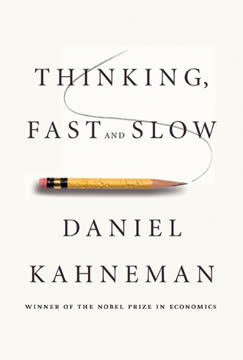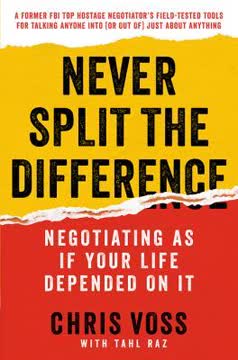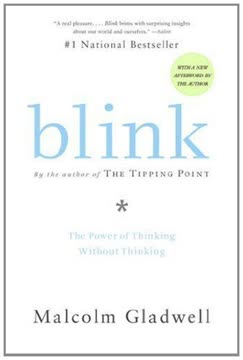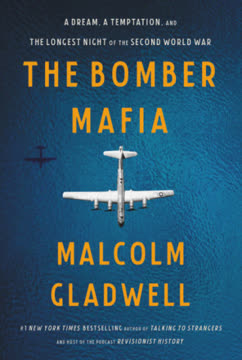Key Takeaways
1. Puzzles vs. Mysteries: Knowing the Difference is Key
Osama bin Laden’s whereabouts are a puzzle. We can’t find him because we don’t have enough information.
Puzzles are solvable. Puzzles have a clear answer, and the challenge lies in finding the missing pieces. The solution often comes from acquiring more information. For example, finding Osama bin Laden was a puzzle that required more intelligence and sources.
Mysteries require judgment. Mysteries, on the other hand, are complex and uncertain. They don't have a single, factual answer. The challenge lies in interpreting the available information and making informed judgments. For example, the situation in Iraq after the fall of Saddam Hussein was a mystery, requiring an understanding of complex social and political dynamics.
- Puzzles: Clear answers, information-driven, solvable with more data
- Mysteries: Complex, uncertain, require judgment, often no clear solution
Applying the framework. Understanding whether a problem is a puzzle or a mystery is crucial for choosing the right approach. Puzzles require more data, while mysteries require better analysis and judgment. This distinction is critical in fields like intelligence, business, and medicine.
2. Too Much Information Can Obscure the Truth
Mysteries require judgments and the assessment of uncertainty, and the hard part is not that we have too little information but that we have too much.
Information overload. In the modern world, we are often overwhelmed with data. This abundance of information can make it difficult to discern what is truly important and can lead to analysis paralysis. The Enron scandal is a prime example, where the sheer volume of financial data obscured the company's true condition.
The Enron case:
- Enron's financial statements were complex and difficult to understand
- The company used special-purpose entities (SPEs) to hide debt
- The sheer volume of information made it difficult to see the underlying problems
The need for filters. To navigate information overload, we need to develop filters and frameworks for analyzing data. This involves focusing on key indicators, asking critical questions, and seeking diverse perspectives. Sometimes, less is more.
3. The Power of "Middle Guys" and On-the-Ground Knowledge
You don’t start at the top if you want to find the story. You start in the middle, because it’s the people in the middle who do the actual work in the world.
"Middle guys" have unique insights. People who are directly involved in the day-to-day work often have a deeper understanding of the issues than those at the top. They possess practical knowledge and insights that are often overlooked. For example, the author's friend Dave, who worked in the grocery business, had unique insights into the ketchup market.
Examples of "middle guys":
- A grocery store employee who understands consumer behavior
- A factory worker who knows the intricacies of the production process
- A police officer who understands the dynamics of a neighborhood
Value of on-the-ground experience. These individuals are often more attuned to the nuances of a situation and less likely to be influenced by political or corporate agendas. Their perspectives are invaluable for understanding complex problems.
4. Power Laws: A Few Hard Cases Drive Most Problems
It cost us one million dollars not to do something about Murray.
Uneven distribution. Many problems, from homelessness to crime, follow a power-law distribution, where a small number of individuals or events account for a disproportionate share of the problem. For example, a small percentage of the homeless population accounts for the majority of healthcare costs.
Examples of power laws:
- A small number of police officers account for most complaints
- A small number of cars produce most of the pollution
- A small number of chronically homeless individuals consume most of the resources
Targeted solutions. Understanding power laws allows us to develop more targeted and effective solutions. Instead of trying to address the entire problem, we can focus on the small group that is driving the majority of the issues. For example, providing housing and support for the chronically homeless can be more cost-effective than managing the problem through shelters and emergency services.
5. Solving Problems Requires Understanding, Not Just Seeing
Seeing a problem and understanding it, then, are two different things.
Beyond the surface. Simply observing a problem is not enough. True solutions require a deep understanding of the underlying causes and dynamics. The Schweinfurt bombing raids during World War II are a prime example, where the Allies successfully bombed the ball-bearing factories but failed to understand the German supply chain.
The Schweinfurt example:
- The Allies bombed the ball-bearing factories, but the Germans had stockpiles
- The Germans were able to import ball bearings from other countries
- The Germans were able to reduce their need for ball bearings
The need for context. Understanding a problem requires considering the broader context and the various factors that contribute to it. This involves asking critical questions, challenging assumptions, and seeking diverse perspectives.
6. The Limits of Pictures: Interpretation is Crucial
That photography not only does not, but cannot, lie is a matter of belief, an article of faith.
Pictures are not objective. While pictures can provide valuable information, they are not always objective or self-explanatory. They require interpretation, and the way we interpret them is influenced by our biases and experiences. The Scud hunt during the first Gulf War is a prime example, where pilots misidentified targets based on limited visual information.
The Scud hunt example:
- Pilots misidentified tanker trucks as Scud launchers
- The targeting pods had limited resolution
- The pilots had limited time to identify targets
The human element. The human task of interpretation is often a bigger obstacle than the technical task of picture taking. This is particularly true in fields like medicine, where mammograms require careful analysis and judgment.
7. Plagiarism: When Borrowing Becomes Theft
I am happy to be the source of inspiration for other writers, and had you asked for my permission to quote — even liberally — from my piece, I would have been delighted to oblige. But to lift material, without my approval, is theft.
Words have owners. The ethical principle that words belong to the person who wrote them is a fundamental concept in intellectual property. Plagiarism, the act of taking someone else's words without attribution, is a serious breach of this principle.
The case of Frozen:
- The playwright Bryony Lavery borrowed heavily from the author's article
- The author felt violated by the unauthorized use of his work
- The case raised questions about the nature of inspiration and originality
The line between borrowing and theft. While inspiration and influence are essential to the creative process, there is a clear line between borrowing and theft. The key is to acknowledge the source of your ideas and to use them in a transformative way.
8. Intelligence Failures: The Perils of Hindsight
The most fundamental problem … is our Intelligence Community’s inability to ‘connect the dots’ available to it before September 11, 2001, about terrorists’ interest in attacking symbolic American targets.
Hindsight bias. It is easy to see patterns and connections in the past that were not obvious at the time. This phenomenon, known as hindsight bias, can lead to unfair criticism of intelligence agencies and other organizations. The 9/11 attacks are a prime example, where many missed signals were only clear in retrospect.
The 9/11 example:
- The FBI and CIA had information about Al Qaeda operatives
- The information was not properly shared or analyzed
- The missed signals were only clear after the attacks
The problem of noise. Intelligence agencies are constantly bombarded with information, much of which is useless or misleading. The challenge is to separate the signal from the noise and to identify the truly important pieces of information.
9. Choking vs. Panicking: Two Distinct Forms of Failure
Under conditions of stress, however, the explicit system sometimes takes over. That’s what it means to choke.
Choking is overthinking. Choking occurs when we become too self-conscious and start overthinking our actions. This disrupts the automatic, intuitive processes that allow us to perform at our best. Jana Novotna's collapse at Wimbledon is a prime example, where she began to think too much about her shots.
Panicking is underthinking. Panicking, on the other hand, occurs when we lose our ability to think clearly and revert to our most basic instincts. This can lead to irrational behavior and a failure to use our training and experience. John F. Kennedy Jr.'s plane crash is a prime example, where he lost his ability to use his instruments and relied on his instincts.
- Choking: Overthinking, loss of instinct, reversion to explicit learning
- Panicking: Underthinking, reversion to instinct, loss of short-term memory
Understanding the difference. Recognizing the difference between choking and panicking is crucial for developing effective strategies for dealing with stress and pressure.
10. The Paradox of Expertise: When Thinking Too Much Hurts
The culpable failure of Aman’s leaders in September and October 1973 lay not in their belief that Egypt would not attack but in their supreme confidence, which dazzled decision-makers.
Expertise can be a liability. While expertise is valuable, it can also lead to overconfidence and a failure to consider alternative perspectives. This is particularly true in complex and uncertain situations. The Israeli intelligence failure during the Yom Kippur War is a prime example, where the head of Aman was too confident in his assessment.
The Yom Kippur War example:
- The head of Aman insisted that war was not imminent
- His confidence blinded decision-makers to the possibility of an attack
- The failure was not a lack of information but a failure of judgment
The need for humility. To avoid the pitfalls of expertise, we need to cultivate humility and a willingness to challenge our own assumptions. This involves seeking diverse perspectives, considering alternative scenarios, and being open to the possibility that we might be wrong.
Last updated:
FAQ
What's "What the Dog Saw: Theories, Predictions, and Diagnoses" about?
- Collection of Essays: "What the Dog Saw: Theories, Predictions, and Diagnoses" is a collection of essays by Malcolm Gladwell, originally published in The New Yorker. It explores various topics through the lens of theories, predictions, and diagnoses.
- Diverse Topics: The essays cover a wide range of subjects, including financial scandals, intelligence reform, and the psychology of failure, among others.
- Human Behavior and Decision-Making: Gladwell delves into how people think, make decisions, and the consequences of those decisions, often challenging conventional wisdom.
- Insightful Analysis: The book provides an insightful analysis of complex issues, making them accessible and engaging for the reader.
Why should I read "What the Dog Saw: Theories, Predictions, and Diagnoses"?
- Engaging Writing Style: Malcolm Gladwell is known for his engaging and thought-provoking writing style, which makes complex topics accessible and interesting.
- Diverse Topics: The book covers a wide range of subjects, offering insights into human behavior, decision-making, and societal issues.
- Challenging Assumptions: Gladwell often challenges conventional wisdom, encouraging readers to think critically about the world around them.
- Broadened Perspective: Reading the book can provide a broader perspective on various issues, helping readers understand the nuances of different topics.
What are the key takeaways of "What the Dog Saw: Theories, Predictions, and Diagnoses"?
- Complexity of Human Behavior: The book highlights the complexity of human behavior and decision-making, showing that things are not always as they seem.
- Importance of Perspective: Gladwell emphasizes the importance of looking at problems from different perspectives to gain a deeper understanding.
- Unpredictability of Predictions: The essays illustrate the challenges and unpredictability involved in making predictions and diagnoses.
- Value of Curiosity: The book encourages readers to remain curious and open-minded, questioning assumptions and exploring new ideas.
How does Malcolm Gladwell approach the concept of "Open Secrets" in the book?
- Enron Scandal: Gladwell uses the Enron scandal to explore the concept of "open secrets," where information is available but not understood or acted upon.
- Puzzle vs. Mystery: He differentiates between puzzles, which have clear solutions, and mysteries, which require interpretation and judgment.
- Information Overload: The essay discusses how having too much information can be as problematic as having too little, leading to confusion and inaction.
- Intelligence and Interpretation: Gladwell argues that the key to solving mysteries lies in the ability to interpret information, not just in gathering it.
What insights does "Million-Dollar Murray" provide about homelessness?
- Power-Law Distribution: The essay reveals that homelessness follows a power-law distribution, with a small number of individuals consuming a disproportionate amount of resources.
- Cost of Inaction: Gladwell highlights the high cost of not addressing chronic homelessness, using the example of Murray Barr, whose medical expenses were astronomical.
- Efficiency vs. Fairness: The essay discusses the tension between efficiency and fairness in addressing homelessness, suggesting that targeted interventions can be more cost-effective.
- Policy Implications: Gladwell suggests that understanding the distribution of homelessness can lead to more effective policies and solutions.
How does "The Picture Problem" address the limitations of visual information?
- Scud Hunt Example: Gladwell uses the Scud hunt during the Gulf War to illustrate the limitations of relying solely on visual information for decision-making.
- Mammography Challenges: The essay discusses the challenges of interpreting mammograms, highlighting the difficulty of distinguishing between benign and malignant findings.
- Complexity of Interpretation: Gladwell emphasizes that pictures often require interpretation and can be misleading if not understood in context.
- Beyond Visuals: The essay suggests that relying solely on visual information can lead to errors, and other forms of analysis are necessary for accurate conclusions.
What does "Something Borrowed" reveal about plagiarism and creativity?
- Dorothy Lewis Case: The essay explores the case of Dorothy Lewis, whose work was used in a play without her permission, raising questions about plagiarism.
- Borrowing vs. Stealing: Gladwell examines the fine line between borrowing for creative purposes and outright stealing, suggesting that context matters.
- Creativity and Influence: The essay highlights how creativity often involves building on existing ideas, and strict plagiarism rules can stifle innovation.
- Ethical Considerations: Gladwell discusses the ethical considerations of using others' work, emphasizing the importance of credit and context.
How does "Connecting the Dots" address intelligence reform?
- Yom Kippur War Example: Gladwell uses the Yom Kippur War to illustrate the challenges of connecting the dots in intelligence analysis.
- Creeping Determinism: The essay discusses the concept of creeping determinism, where events seem inevitable in hindsight but were not clear beforehand.
- Intelligence Complexity: Gladwell highlights the complexity and ambiguity of intelligence work, where information is often incomplete and open to interpretation.
- Reform Challenges: The essay suggests that intelligence reform must balance the need for cooperation with the benefits of diverse perspectives and competition.
What does "The Art of Failure" say about choking and panic?
- Choking vs. Panic: Gladwell differentiates between choking, where overthinking leads to failure, and panic, where instinct takes over and leads to mistakes.
- Jana Novotna Example: The essay uses the example of tennis player Jana Novotna to illustrate how pressure can cause skilled individuals to choke.
- Stereotype Threat: Gladwell discusses how stereotype threat can lead to choking, as individuals become overly conscious of negative stereotypes.
- Performance Under Pressure: The essay explores how different types of pressure affect performance and the importance of understanding these dynamics.
How does "Blowup" challenge the traditional understanding of technological disasters?
- Challenger Explosion: Gladwell uses the Challenger explosion to question the traditional understanding of technological disasters as preventable.
- Normal Accidents Theory: The essay introduces the theory of normal accidents, suggesting that complex systems inherently carry risks that cannot be entirely eliminated.
- Risk Homeostasis: Gladwell discusses the concept of risk homeostasis, where improvements in safety can lead to riskier behavior in other areas.
- Implications for Safety: The essay suggests that our rituals of disaster may not prevent future accidents, as risks are embedded in the complexity of modern systems.
What are the best quotes from "What the Dog Saw: Theories, Predictions, and Diagnoses" and what do they mean?
- "Curiosity about the interior life of other people’s day-to-day work is one of the most fundamental of human impulses." This quote highlights the book's exploration of human behavior and the importance of understanding different perspectives.
- "The distinction is not trivial." Gladwell often emphasizes the importance of seemingly small distinctions, such as between puzzles and mysteries, in understanding complex issues.
- "We have to learn that sometimes a poor performance reflects not the innate ability of the performer but the complexion of the audience." This quote from "The Art of Failure" underscores the impact of external factors on performance.
- "What accidents like the Challenger should teach us is that we have constructed a world in which the potential for high-tech catastrophe is embedded in the fabric of day-to-day life." This quote from "Blowup" challenges the assumption that technological disasters are always preventable.
How does Malcolm Gladwell use storytelling in "What the Dog Saw: Theories, Predictions, and Diagnoses"?
- Engaging Narratives: Gladwell uses engaging narratives to illustrate complex ideas, making them accessible and relatable to readers.
- Real-Life Examples: The book is filled with real-life examples and case studies, which help to ground abstract concepts in reality.
- Interdisciplinary Approach: Gladwell often draws on insights from various fields, such as psychology, sociology, and history, to enrich his storytelling.
- Provocative Questions: Through storytelling, Gladwell raises provocative questions that challenge readers to think critically about the world around them.
Review Summary
What the Dog Saw receives mostly positive reviews, with readers praising Gladwell's engaging writing style, diverse topics, and ability to make complex subjects accessible. Many appreciate his research depth and storytelling skills. Readers find the book thought-provoking, offering unique perspectives on various subjects. Some highlight specific chapters as particularly insightful. While most reviewers rate it highly, a few find it less compelling than Gladwell's other works. Overall, the book is well-received for its informative and entertaining content.
Similar Books
Download PDF
Download EPUB
.epub digital book format is ideal for reading ebooks on phones, tablets, and e-readers.

















